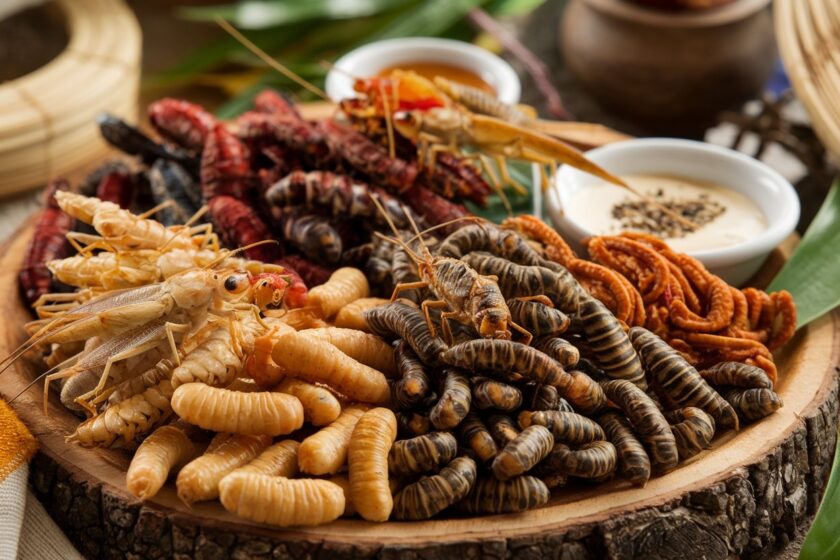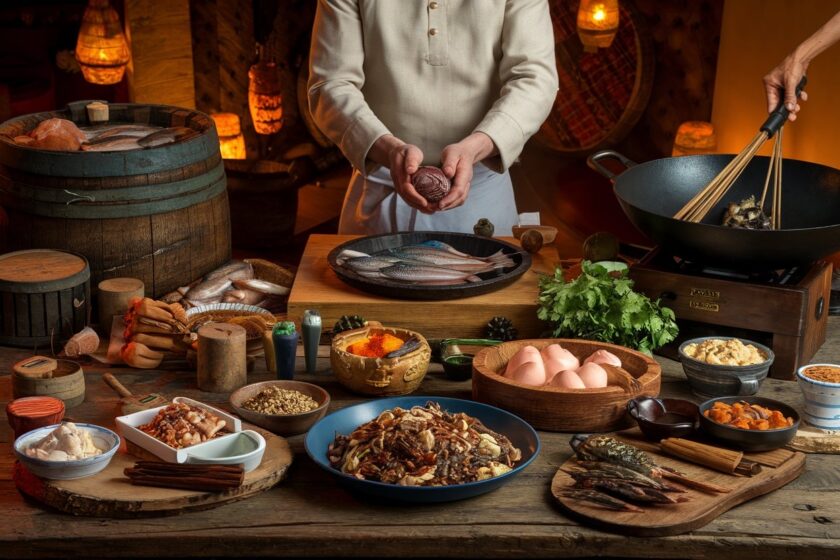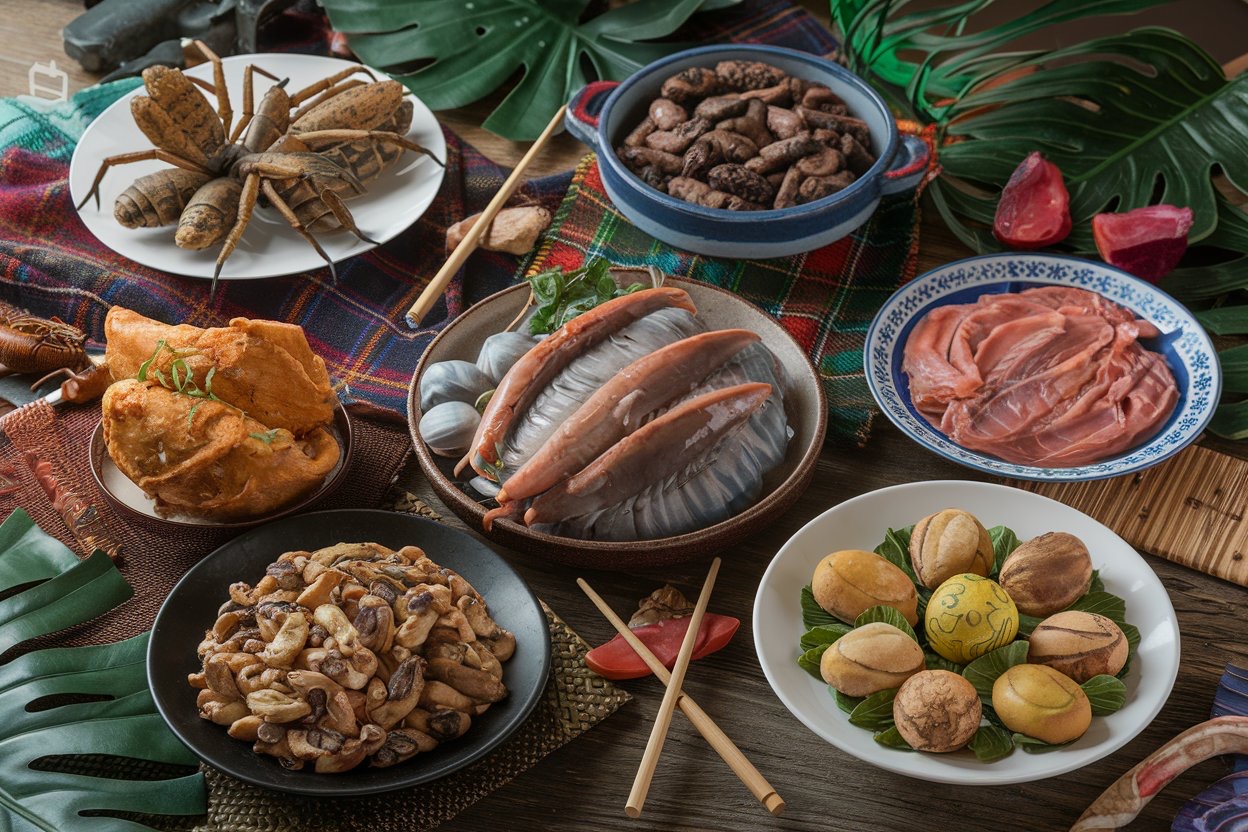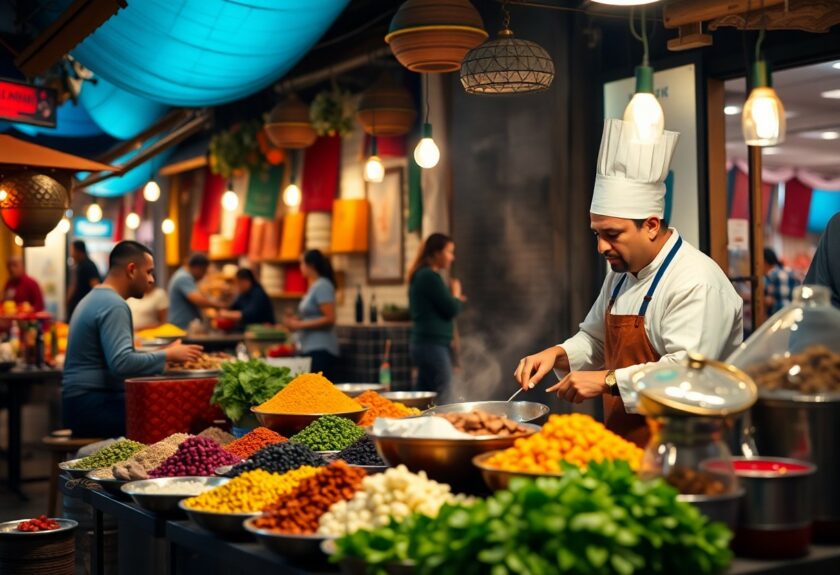Many food enthusiasts seek to expand their palates beyond the ordinary, and exploring the world’s strange national dishes can be an exciting journey for you. From unexpected flavour combinations to unusual ingredients, these culinary creations tell fascinating stories about their cultures. In this blog post, you will discover five peculiar national dishes that might just inspire your next culinary adventure.
Unusual Delicacies from Around the World
For the adventurous eater, discovering unusual delicacies can offer an exciting glimpse into the culinary traditions of different cultures. These unique dishes challenge your taste buds and can sometimes be a test of courage. As you consider sampling some of the world’s most bizarre national dishes, each bite will undoubtedly tell a story, reflecting local customs and flavours that are as diverse as the countries they originate from.
Hákarl – Iceland’s Fermented Shark
For many, Hákarl epitomises the essence of Icelandic cuisine, showcasing both tradition and a unique palate. This fermented Greenland shark undergoes a lengthy curing process, which transforms its notoriously ammonia-rich taste into something more palatable. Often served in small cubes, you’ll find it paired with a shot of Brennivín, a potent local schnapps, enhancing your culinary experience in true Icelandic fashion.
Casu Marzu – Sardinia’s Live Cheese
Marzu is not your ordinary cheese; it is renowned for containing live insect larvae. This controversial delicacy, made from sheep’s milk, offers an extraordinary tasting experience with its creamy texture and strong flavour. You may soon find yourself indulging in this traditional Sardinian fare, which, although banned in some places, remains a beloved part of local cuisine.
The intriguing character of Casu Marzu lies in its preparation, which involves allowing cheese fly larvae to digest the fat within the cheese, resulting in a soft and spreadable product. While it may not be for the faint-hearted, those who dare to try it often describe the unique texture and flavour as an unforgettable culinary tale. If you’re feeling particularly adventurous, you might even enjoy the thrill of having the larvae jump as you take a bite, adding an extra layer of excitement to your tasting experience

Unique Flavor Profiles
One of the most thrilling aspects of national dishes around the world is their unique flavour profiles, which often arise from traditional preparation methods and local ingredients. Each dish tells a story about the culture and history of its origin, giving you a deeper appreciation of the diverse tastes that are available globally. Expect surprising combinations and bold flavours that challenge your palate, providing a culinary adventure that you won’t soon forget.
Insects as Snacks: A Crunchy Tradition
Beside the more conventional snacks you might be used to, many cultures embrace insects as a delightful crunchy treat. This practice, rich in protein and nutrients, varies greatly from crispy crickets to flavourful mealworms, with each offering a different taste experience. You might just find that these bites offer an intriguing texture and surprising flavours that elevate your snacking repertoire.
Smelly Foods: Embracing Odors in Cuisine
Along with distinctive textures, many national dishes celebrate strong scents, challenging your preconceptions of what can be savoury. From pungent cheeses to fermented fish sauces, you’ll discover that the odour of a dish often hints at the depth of flavour contained within. Such aromatic experiences not only broaden your culinary horizons but also connect you with the cultures that proudly showcase their olfactory delights.
To fully appreciate smelly foods, you should approach them with an open mind, as their intense aromas can either delight or deter. For instance, dishes like durian, with its notorious smell, can polarise opinions, yet those who embrace it often find a creamy, complex sweetness. Similarly, anchovies and fermented vegetables develop rich umami flavours that enhance various cuisines. By launching on this olfactory journey, you’re likely to discover new tastes and textures that captivate your palate.
Cultural Significance of Strange Dishes
Even the strangest national dishes often carry profound cultural significance, serving as a lens through which you can explore a nation’s history, values, and social dynamics. These unusual foods embody unique rituals and local traditions, reflecting the geography, climate, and agricultural practices of their shared environment. By tasting these curious dishes, you gain insight into your connection with diverse cultures and expand your gastronomic horizons, granting you a deeper appreciation of the world around you.
Food as Identity and Heritage
On a fundamental level, food acts as a marker of identity and heritage, encapsulating the beliefs, customs, and narratives unique to a people. It allows you to connect with your ancestry and cultural roots, reinforcing a sense of belonging within the community. Exploring strange national dishes can reveal the stories behind them, encouraging you to embrace the rich tapestry of diverse cultures while also challenging your perceptions of what is considered traditional.
The Role of Discomfort in Culinary Exploration
On your journey of culinary exploration, discomfort can often serve as a powerful catalyst for growth. When you step outside your comfort zone and sample unfamiliar flavours and textures, you expand your palate and deepen your understanding of cuisine. This process not only enhances your culinary skills but also fosters personal growth, encouraging you to approach life with an open mind.
For instance, trying dishes that may initially seem unappealing, such as fermented foods or unusual meats, can be an unsettling experience. Yet, this discomfort often leads to delightful surprises and memorable moments. As you embrace the unfamiliar, you’ll likely discover flavours and dishes that challenge your preconceptions, enriching your culinary repertoire and inspiring you to seek out more adventurous eating experiences in the future.

Preparing and Cooking: The Art Behind Oddity
Many of the world’s strange national dishes boast unique preparation methods that honour their cultural heritage. As you explore these culinary oddities, you’ll find that the artistry and techniques involved reflect the traditions of the regions they come from. The process often combines unusual ingredients with time-honoured practices, showcasing the inventiveness and resourcefulness of local cooks. Embracing these eccentric dishes can lead you to surprising flavour profiles and textures that delight the palate and challenge your culinary expectations.
Traditional Methods of Preparation
Before delving into the delightful peculiarities of strange national dishes, it’s important to understand the traditional methods employed in their preparation. For many cultures, time-intensive techniques such as fermenting, pickling, or slow-cooking are crucial to achieving the desired flavours. These methods often involve regional ingredients that have been used for generations, resulting in a unique taste that honours the dish’s lineage and significance.
Modern Twists on Classic Strange Dishes
Below the surface of traditional recipes lie modern interpretations that breathe new life into classic strange dishes. Chefs around the globe infuse creativity and innovation, experimenting with contemporary cooking techniques and ingredients. You will find these modern takes can elevate the original dishes, making them more accessible to a broader audience while still respecting their roots.
Due to the increasing interest in global cuisines, modern twists on classic strange dishes have gained remarkable traction in recent years. Chefs are now blending local ingredients with unconventional cooking methods, catering to evolving palates while preserving authenticity. This fusion allows you to savour the essence of the traditional dishes while relishing a fresh perspective, showcasing the versatility and adaptability of culinary arts in our ever-changing gastronomic world.
Final Words
Conclusively, your exploration of strange national dishes has certainly opened the door to new culinary experiences. By embracing these unique gastronomic delights, you not only expand your palate but also gain insight into the cultural significance behind each meal. Whether you savour the rich flavours of fermented delicacies or indulge in unconventional ingredients, such adventures enrich your understanding of global cuisine. Let your curiosity guide your culinary journey, and who knows what extraordinary flavours await you next!


